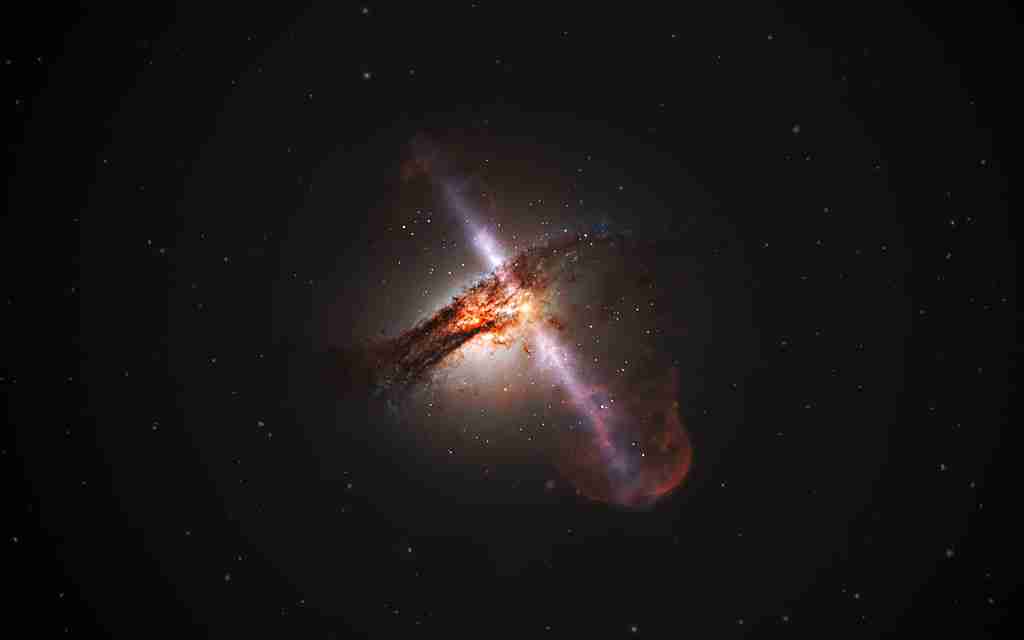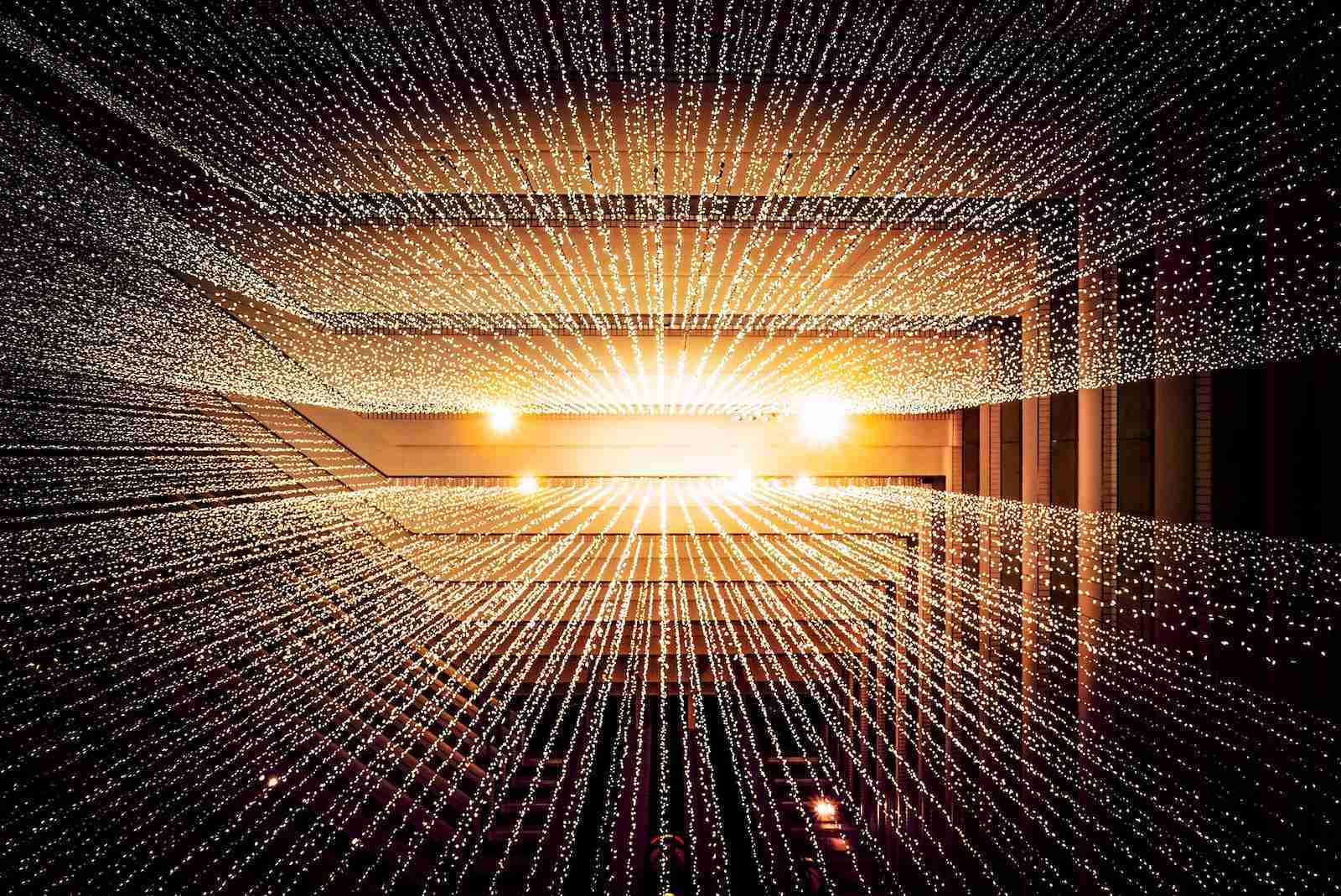21 Interesting Facts About The Speed Of Light (Light Up)
1. The Speed of Light is approximately 299,792,458 meters per second.
Did you know that light travels incredibly fast? In fact, physicists estimate the speed of light to be an astonishing 299,792,458 meters per second.
That’s nearly 300 million meters per second. Put into perspective, light can go around the world 7.5 times in one single second. Weak electromagnetic signals like radio waves take years or even centuries to traverse distances simultaneously, while light travels effectively instantaneously.
This is why it’s sometimes called a “universal speed limit.” Now you see why most scientists consider it the fastest thing in the universe.
2. Earth would plunge into darkness after 8 minutes if the Sun suddenly disappeared.
Earth would plunge into darkness after 8 minutes if the Sun suddenly disappeared. This delay occurs because light from the Sun takes approximately 8 minutes and 20 seconds to reach Earth.
Thus, we wouldn’t notice immediately if the Sun went out. Nine minutes later, however, we’d find ourselves in complete darkness. Earth would rapidly cool without the Sun’s light, and life, as we know it, would become unsustainable.
3. The Speed of Light is constant and unchanging, regardless of the observer’s motion or the source of the light.
The speed of light is unyielding – it inflexibly stays the same, no matter the observer’s motion or the light’s source. This integral speed can be written into scientific equations and witnessed in nature.
It functions as a steadfast law, not altering its velocity whether observed from a speeding car or an object at rest. The constancy has remained palpable since 1865, when scientists recognized its values encompassing every corner of our universe.
Even if we shift or limit perspective, that peremptory luminous velocity remains unmoved and undeterred. Its omnipresence is illuminated in its grand magnitude, whose figurative power is measured by factuality and immutability.
4. The Speed of Light is the same in all directions, regardless of the direction it travels.

The speed of light acts as a conduit, unchanging in every direction. It is never influenced by its course.
Whether in a northward drift, a sharp pivot eastward, or following the curve of Earth straight down to the surface, light rockets forth with the same blazing momentum at all times.
This mysterious phenomenon astounds scientists, having held constant regardless of any exterior factors for centuries. The speed of light remains fixed and devout to its everlasting laws, no matter what fate awaits it in the cosmos.
5. The Speed of Light is so fast that light from the sun takes just over 8 minutes to reach Earth.
The speed of light is lightning-fast. Light from the sun has a long journey ahead of it before reaching our planet, traveling at an incredible 671 million miles per hour.
And yet, that journey only takes about 8 minutes for this light to reach Earth’s surface. Isn’t that remarkable? This means it takes barely any time for us to catch a glimpse of beauty and warmth from the same source daily.
Even with its immense distance from Earth, we can still feel the gentle embrace of the bright star in eight short minutes.
6. If you could travel at the speed of light, you’d circle Earth 7.5 times in 1 second.
Traveling at the speed of light is an astonishing concept. Light travels at approximately 299,792 kilometers per second. Given that the Earth’s circumference is about 40,075 kilometers, you can calculate how many times you would circle the Earth in one second by dividing the speed of light by the Earth’s circumference: 299,792 km/s ÷ 40,075 km ≈ 7.5 times.
This means you could circle the planet 7.5 times in just one second at that speed. This fact underscores the incredible speed of light compared to anything we can currently achieve, hinting at extraordinary possibilities for future advancements in physics and space travel.
7. Light reaches the Moon in just 1.3 seconds.
Light travels from Earth to the Moon in just 1.3 seconds. This remarkable speed is due to light’s velocity of about 299,792 kilometers per second. The average distance from Earth to the Moon is roughly 384,400 kilometers.
Dividing this distance by the speed of light gives us the travel time: 384,400 km ÷ 299,792 km/s ≈ 1.3 seconds. This fact highlights the immense speed of light over the vast expanse of space between our planet and its natural satellite.
8. Black holes are so dense that no light can escape their clutches.

Black holes are so dense that not even light can escape their grasp, making them incredibly challenging to detect directly. Instead, astronomers observe black holes‘ effects on their surroundings, such as stars in binary systems.
When a black hole pulls gas from a companion star, the gas heats up and emits light before being swallowed, revealing the black hole’s presence. Recent studies using the Spitzer Space Telescope have identified such a black hole in the VFTS 243 system within the Tarantula Nebula, furthering our understanding of these elusive objects.
9. The Speed of Light is the fastest thing in the universe; nothing can travel faster than light.
Nothing in the universe could ever hope to rival the incredible speed of light. It tops the charts at 300,000 km/sec and remains unbeaten. Light can circle Earth’s equator 7.5 times in a single second while traveling at this scorching pace!
A miracle of modern science and understanding, orbiting bodies, signals, and data rush past us, all thanks to photons accelerating ever onward.
Even with enormous advances in technology and ideas, it seems that nothing we can currently conceive will be able to exceed the phenomenal velocity of traveling photons. Nothing can travel faster than light!
10. The Speed of Light is affected by the medium it is traveling through, such as air or water, and will be slower in these materials.
The speed of light is constant, though it can be affected when traveling through different mediums. Through the air, the speed is considerably faster than through water, where the rate of speed decreases significantly.
In fact, travel through water significantly reduces the movement of light. The rate at which heat passes is another factor that can affect the moving speed of light.
11. Shadow is actually caused by light traveling in a straight line and being blocked by your body.
A shadow forms when light travels in a straight line and is blocked by an object, such as your body. This blockage prevents the light from reaching the area directly behind the object, creating a dark silhouette.
The sharpness and size of the shadow depend on the light source’s angle and distance. Shadows are a fundamental demonstration of how light interacts with objects in its path.
12. The Speed of Light is a central concept in Einstein’s theory of special relativity, published in 1905.
In 1905, the esteemed scientist Albert Einstein presented a ground-breaking theory. Entitled special relativity, it proclaimed that nothing in the universe could travel faster than the speed of light.
This concept of rapid light particles assumed importance within the context of this famous physicist’s publication.
It established the unbreakable threshold for physical velocity, beyond which no object can travel, further revolutionizing our understanding of reality.
13. The Speed of Light is also important in understanding the nature of black holes and the Big Bang theory.
The speed of light is vitally important, especially when trying to understand phenomena such as black holes and the Big Bang theory.
Its influence in science is immense – from small quantum scales to massive galactic levels and everything in between.
The amount of energy needed for light to propagate at a certain rate is scientifically staggering, giving us insight into the inner workings of our universe.
Without this fascinating velocity, we would know far less about our world and what lies beyond it.
14. The Speed of Light is so fast that it is often used as a standard to measure other speeds.
The speed of light is unfathomably fast, a true benchmark in speed measurement. It multiplies itself 227,000 times every second it flies, beyond anything an ordinary person could easily comprehend.
This incredible feat is not recognized: light has been used as a standard across various fields to understand and compute other displacement speeds from sound waves to space travel. The significance of this measure explains its never-ending use across time.
15. The Speed of Light is used to develop new technologies, such as fiber optics and laser systems.

The speed of light has become a valuable asset in the progression of technology. Its properties have allowed us to create much more reliable communication networks, known as fiber optics.
Laser systems that are even faster have been synthesized, utilizing aspects of optics and the speed at which photons travel, most famously illustrated by Einstein’s Theory of Relativity.
Such advancements in light technologies have benefitted our lives today, increasing the capability to communicate across long distances at unbeatable speeds.
16. The Speed of Light is finite, but it is considered “infinite” in everyday life because it is so much faster than anything else we encounter.
The incredible thing about geometry is that it’s used to compute the vast distances between stars and galaxies. The measurements are so grand that you’d call them impsAAS2sble.
But math proves otherwise – in fact, it’s exceptionally precise, crafted down to very specific numbers.
Astronomers rely on these extraordinary equations to uncover the universe’s secrets – an alluring reality we await in anticipation, never quite sure what awaits us on the other side.
17. As Einstein’s theory of general relativity predicted, Gravity affects the speed of Light.
Physicists worldwide use Albert Einstein’s theory of general relativity to explore outer space and study gravity.
This revolutionary theory suggests that gravity influences the speed of light—a unique yet highly significant point.
Scientists have repeatedly observed this phenomenon, verifying Einstein’s predictions as true.
The speed of light is considered to be a fundamental constant of our universe; however, researchers have taken this one step further and established its relationship with gravitational forces.
18. Scientists believe the first light ever created in the universe was during the Big Bang.
Scientists believe the first light in the universe emerged during the Big Bang. This event, which occurred around 13.8 billion years ago, produced intense energy and radiation.
As the universe expanded and cooled, this initial light transformed into what we now observe as the cosmic microwave background. This remnant radiation provides crucial insights into the early universe’s conditions.
19. The twinkle of stars is actually caused by the Earth’s atmosphere interfering with the light.

The twinkle of stars is due to the Earth’s atmosphere interfering with their light. As starlight passes through the atmosphere, it encounters varying air densities and temperatures.
These fluctuations bend the light in different directions, causing the star’s light to appear to flicker. This effect, known as “stellar scintillation,” makes stars seem to twinkle when viewed from the ground.
20. The Speed of Light is so fast that it takes light from the nearest star outside our solar system, Proxima Centauri, over 4 years to reach us.
Did you know that the speed of light is incredible? Its velocity is an amazing 300,000 km per second! So fast, in fact, that it takes over 4 years for light from the closest star outside our solar system – Proxima Centauri – to reach us.
This can be difficult to comprehend, considering it may take someone more than 4 years to drive across the United States!
Despite this length of time passing, Proxima Centauri looks twinkling and as beautiful in one year during the next due to its beam having already left a long time ago.
Amazingly, we simply wait for the flashback of luminescence upon arrival here on Earth.
21. Scientists are developing light sails that could propel spaceships using the pressure of sunlight.
Scientists are developing light sails to propel spaceships using sunlight’s pressure. These sails, made of ultra-thin reflective materials, harness the momentum of photons hitting them. This concept could enable spacecraft to travel vast distances without conventional fuel.
Light sails offer a promising method for future space exploration, leveraging the sun’s constant and abundant energy. Researchers are optimistic about their potential to revolutionize interstellar travel.
FAQS
The speed of light in a vacuum is precisely 299,792,458 meters per second (approximately 300,000 kilometers per second or about 186,282 miles per second). This constant speed is a fundamental aspect of the laws of physics and plays a crucial role in theories of relativity and the behavior of electromagnetic radiation.
The speed of light in a vacuum is determined by the fundamental constants of nature: the electric permittivity of free space (ε0) and the magnetic permeability of free space (μ0). These constants dictate how quickly electromagnetic waves, including light, can propagate through empty space. In other mediums, such as air, water, or glass, the speed of light is slightly slower due to interactions with atoms and molecules within the material. Additionally, gravitational fields can affect light speed according to the theory of general relativity.
In the famous equation 𝐸=𝑚𝑐2, the 𝑐2 term represents the speed of light squared. This equation, formulated by Albert Einstein in his theory of special relativity, relates energy (𝐸) to mass (𝑚) and the speed of light (𝑐). It states that mass and energy are interchangeable and directly proportional to each other. When mass is converted into energy (or vice versa), the amount of energy produced equals the mass times the speed of light squared.
Light exhibits both wave-like and particle-like behavior, depending on the context in which it is observed. This phenomenon is known as wave-particle duality. In certain experiments, such as the double-slit experiment, light behaves like a wave, producing interference patterns characteristic of wave interference. In other experiments, such as the photoelectric effect, light behaves like a stream of particles, known as photons, which carry discrete packets of energy.
Light travels faster than sound primarily because light waves propagate through electromagnetic fields, whereas sound waves propagate through a medium, such as air, water, or solids. The speed of light in a vacuum is approximately 299,792 kilometers per second (or about 186,282 miles per second), whereas the speed of sound varies depending on the medium it travels through. In air at room temperature, sound travels at approximately 343 meters per second (or about 1,235 kilometers per hour). Because light does not rely on a medium to propagate, it can travel much faster than sound, which requires a medium for transmission.







